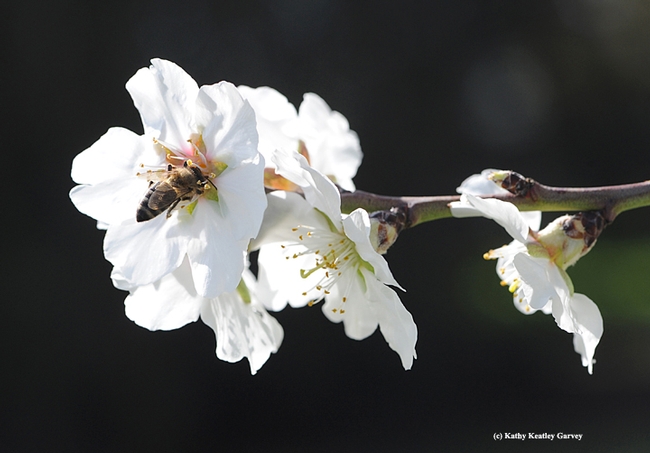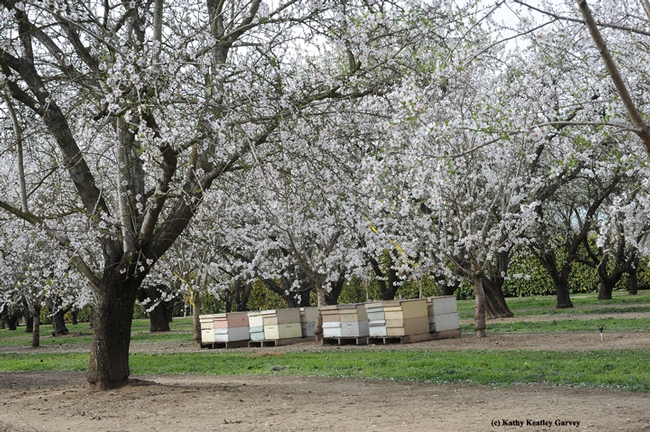The Almond Board of California will unveil its Honey Bee Best Management Practices tomorrow (Thursday, Oct. 16) in an ongoing effort to promote and protect bee health.
The board will do so by holding a press conference at 8:30 a.m. Pacific Time with questions directed at Richard Waycott, CEO, Almond Board of California; ?Bob Curtis, associate director of Agricultural Affairs, Almond Board of California? and Extension apiculturist (retired) Eric Mussen of the UC Davis Department of Entomology and Nematology.
It promises to be a comprehensive set of Best Management Practices or BMPs.
Remember last spring when beekeepers in the San Joaquin Valley almond orchards reported losing 80,000 colonies? Beekeepers believe that pesticides killed their bees after the almond pollination season ended but just before they could move their bees to another site.
Mussen wrote about the issue in the March/April edition of his newsletter, from the UC apiaries, published on his website. We also blogged about it.
"When should the colonies be allowed to leave the orchards?" Mussen asked. "When pollination no longer is happening. That does not mean that the bees should remain in place until the last petal falls from the last blossom."
Communication is key to a good BMP. The Almond Board recently published three informational pieces, “Honey Bee Best Management Practices for California Almonds,” "Honey Bee Best Management Practices Quick Guide for Almonds,” and “Applicator/Driver Honey Bee Best Management Practices for Almonds” (in English and Spanish).
The topics include:
- Preparing for arrival
- Assessing hive strength and quality
- Protecting honey bees at bloom
- Honey bees and insecticides
- Honey bees and fungicides
- Using integrated pest management (IPM) strategies to minimize agricultural sprays
- Honey bees and self-compatible almond varieties
- Best management practices for pest control during almond bloom
- Removing honey bees from the orchard
- Addressing suspected pesticide-related honey bee losses
- What to expect in an investigation
The Bee Informed Partnership (BIP), headed by Dennis van Engelsdorp, produced three short videos as the result of a 2012-2013 beekeeping survey. Project Apis m (PAm) published some of the information online about varroa mites, nosema, honey bee nutrition and the like.
It's important for almond growers and beekeepers to keep the lines of communication open. Bees make a "bee line" toward the almond blossoms, but the growers and the beekeepers don't always make a timely "bee line" toward one another to resolve issues that surface.
Attached Images:

